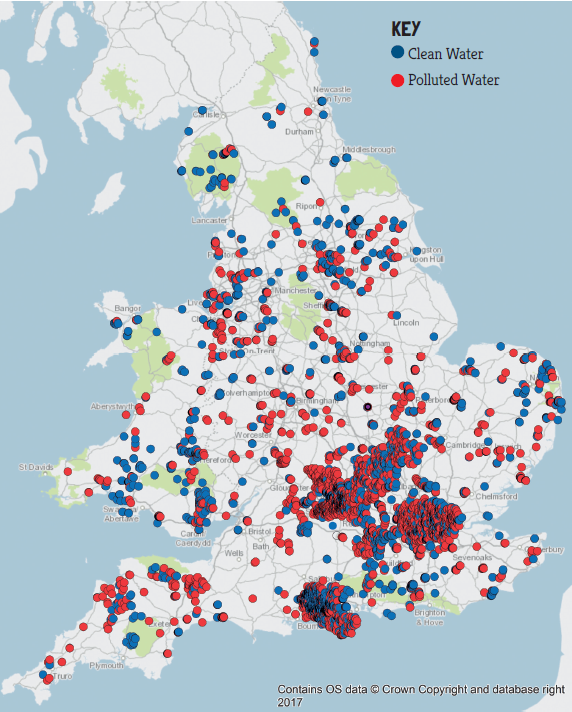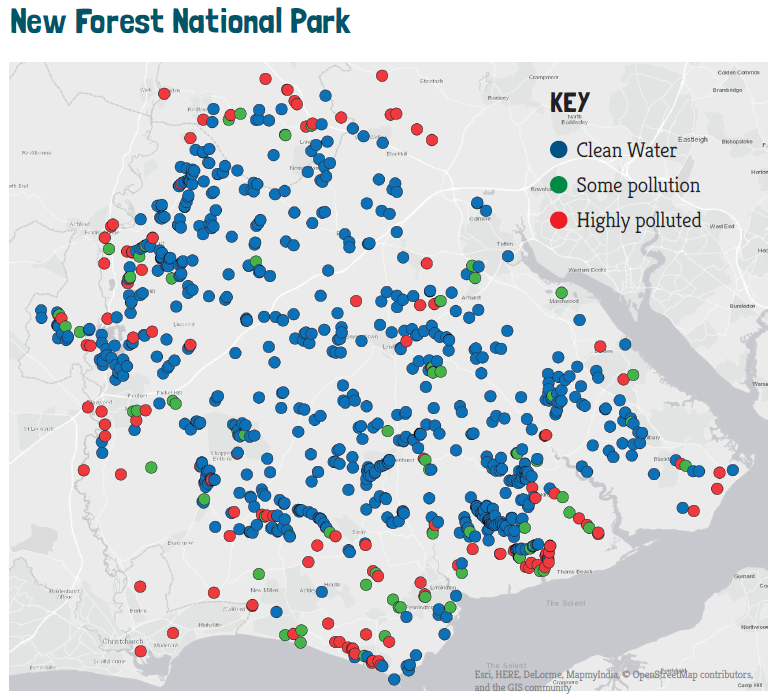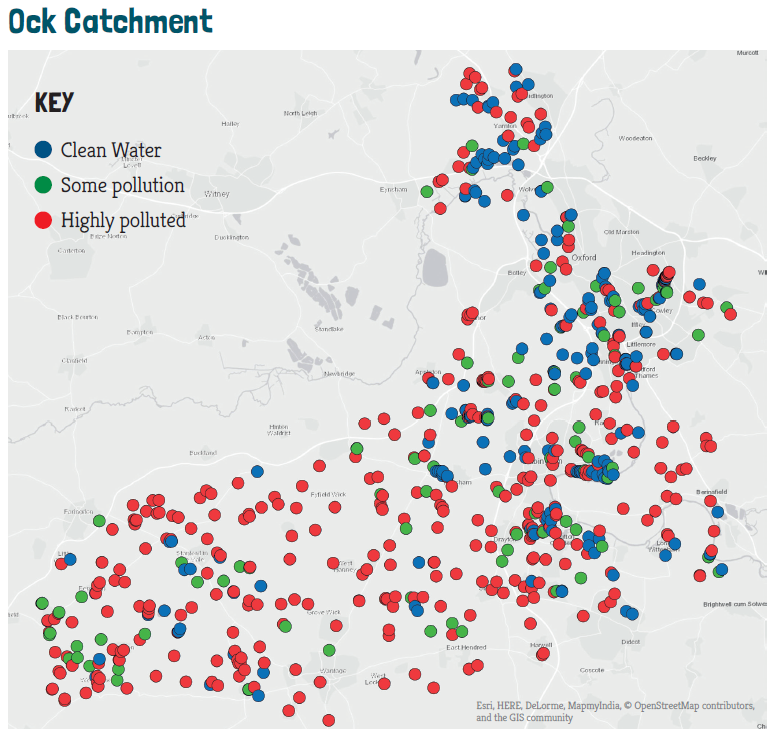Clean Water for Wildlife – The Search for Clean Water
22nd March 2018
 A three year national survey comes to an end. Nearly 10,000 results were recorded by volunteers from over 7000 waterbodies across England and Wales.
A three year national survey comes to an end. Nearly 10,000 results were recorded by volunteers from over 7000 waterbodies across England and Wales.
 In the first national survey of its kind, citizen scientists were recruited to gather data about nutrient pollution from all kinds of freshwater habitats, from the tiniest trickle, pools and streams, to expansive lakes and roaring rivers. The aim was to find fantastic freshwater free from pollution where wildlife can thrive and to raise awareness of the extent of nutrient pollution affecting freshwater wildlife.
In the first national survey of its kind, citizen scientists were recruited to gather data about nutrient pollution from all kinds of freshwater habitats, from the tiniest trickle, pools and streams, to expansive lakes and roaring rivers. The aim was to find fantastic freshwater free from pollution where wildlife can thrive and to raise awareness of the extent of nutrient pollution affecting freshwater wildlife.
Until recently there were many challenges to finding the best freshwater habitats, those that support rich and diverse communities of plants and animals. It would have required highly skilled plant and invertebrate surveys. However, good water quality is often the best indicator of a thriving freshwater habitat. Clean water habitats, those that are free from pollution, are home to a vast array of plants, invertebrates, amphibians, fish, mammals and birds. Thanks to the innovative Clean Water Kits and the power of citizen science, it has been possible to discover fantastic clean water gems, places free from pollution, at a landscape level. Over 30,000 Clean Water Kits have been distributed to volunteers across England and Wales to test their local freshwater habitats and to build a map of water quality.
The Clean Water Kits rapidly measure the levels of nitrate and phosphate, two widespread causes of nutrient pollution. These nutrients are added to the landscape from many sources including fertilizers used in agricultural farming and detergents from household waste water. These nutrients act like fertilizer, allowing vigorous fast growing species to smother slower growing and more delicate species, eventually killing them off. Sadly it only takes a little pollution to cause the loss of much of our freshwater wildlife, in particular sensitive and our now rarest species, so it is more important than ever to find the flourishing clean water habitats.
Where was the clean water found?
 Water quality results across England and Wales
Water quality results across England and Wales
Just under 10,000 results have been sent in by volunteers, who sampled over 7000 waterbodies across England and Wales.
The results show that nutrient pollution is widespread and very high levels of nitrates and phosphates were found amongst all freshwater habitats types. However, clean water could still be found in all landscapes, even those intensively managed or highly urbanised, and some landscapes were almost free of nutrient pollution. More good news is that the results revealed for the first time the national importance of small waterbodies in the clean water network.
Smaller waters were found to be much more likely to hold clean unpolluted water, in particular ponds. 66% of ponds were free of nutrient pollution, whereas only 27% of rivers and streams were free of pollution. This is not too surprising as the river network drains from large areas of land with many sources of pollution, whereas ponds can drain from locally clean sources of water.
Water quality varied quite significantly between landscapes depending on land-use. Below are a couple examples of two contrasting landscapes.
The New Forest National Park
Unlike the rest of lowland England and Wales, the New Forest National Park is a landscape dominated by clean unpolluted freshwater habitats. Over three quarters of the sites (76%) showed no evidence of nutrient pollution.
The ‘open forest’, the area of semi-natural habitats and uncultivated land in the core of the Forest, produced 72% of the clean water samples, whilst the intensively farmed and urban areas on the edge of the Forest were dominated by polluted samples.
This is the first time any information on water quality within the New Forest has been collected at a landscape scale and it’s now easy to see why this unique landscape supports some of the richest and rarest freshwater wildlife in the UK and Europe.
 Water quality results from New Forest National Park
Water quality results from New Forest National Park
Ock River Catchment
Typical of the urban and rural landscapes we sampled in England and Wales, the Ock Catchment‘s freshwater habitats suffered from both nitrate and phosphate pollution – 13% had some pollution and 52% were highly polluted.
The clean freshwaters (37%) had a patchy distribution, and were located in semi-natural habitats like woodland, fens and meadows. The results of the survey demonstrate the importance of ponds and smaller running waters to provide clean water habitats in otherwise polluted landscapes – 56% of clean water habitats were ponds.
 Water quality results from Ock Catchment
Water quality results from Ock Catchment
What can we take forward into the future?
Clean Water for Wildlife has revealed many clean water sites. We can now focus on the best of these and use these areas to create more clean water, for example through pond creation or practical work downstream from clean streams and ditches. We now have water quality data from over 7000 waterbodies. This can add weight of evidence to advocacy work promoting the importance of smaller waters. Finally, all the data collected is open access and compatible with similar surveys. This means everyone can share and use the findings.
The availability of clean water is precious and declining. We need to champion the clean water sites now before they are lost. Many freshwater plants and animals need this pristine, unpolluted water to survive. Clean water is all around us; let’s strive to protect what we have and make more clean water habitat where we can.
Clean Water for Wildlife is one of three initiatives in the People, Ponds and Water project. It is funded by the National Heritage Lottery.
By Hannah Worker, Dr Naomi Ewald and Dr Jeremy Biggs.
